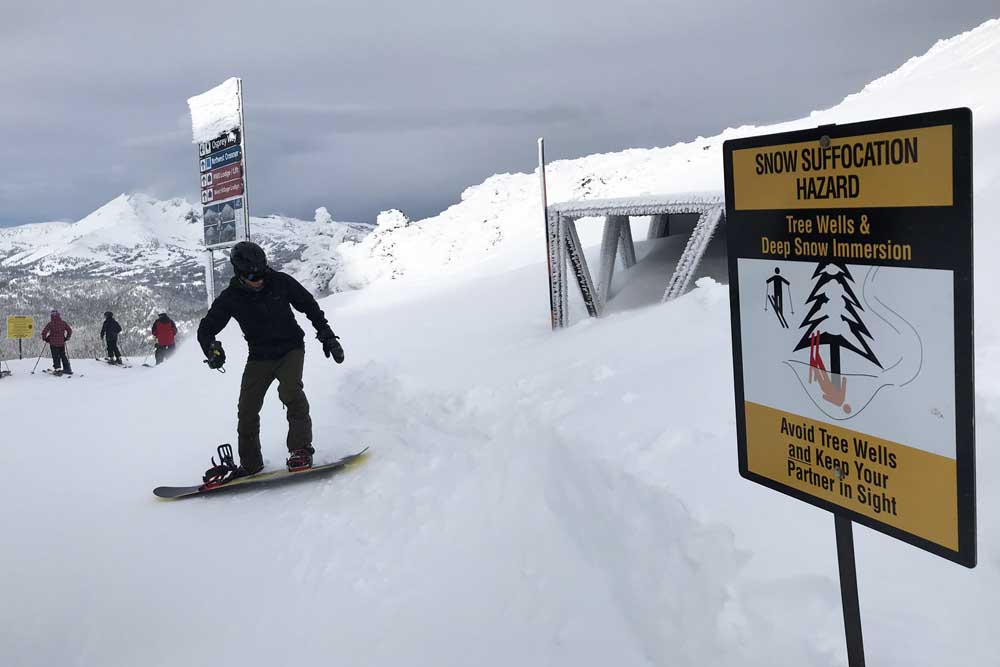Deadly tree wells continue to pose danger for Oregon skiers
Published 12:00 am Tuesday, February 26, 2019

- In this 2019 Bulletin file photo, a sign warns skiers and snowboarders of the dangers of tree wells and the potential of snow suffocation at the top of the Northwest Express chair at Mt. Bachelor ski area.
Two deaths at Oregon ski resorts this month have highlighted the threat of tree wells, one of the biggest dangers for skiers and snowboarders.
Tree wells are hidden cavities of deep, fresh snow that form when low-hanging branches block flakes from compacting in the space around tree trunks. Skiers who venture close to trees can fall in, usually headfirst, and quickly suffocate — just like drowning in water.
Trending
Two snow riders died in tree wells at Mt. Bachelor on the same day in 2018.
Rescue organizations say the key is to stay calm if you fall into a tree well, and try to clear space around your face to breathe. If you can’t reach your face to clear out snow, move your head around to make space.
Try to reach up to grab a tree limb and pull yourself out, or else make noise and trust that someone will come by to save you.
Rescuers also stress the importance of not skiing alone, but the two men who died in February — a 42-year-old man at Timberline Lodge, and a 23-year-old ski patrol member at Mt. Ashland — were both skiing with other people.
John Burton, spokesman for Timberline Lodge, said the message wasn’t as simple as just skiing with a partner.
“It’s not ski with a buddy — it’s ski with a buddy and always keep your partner in sight,” he said.
Trending
Johnathan Patrick Likeke Walker was with two other ski patrol members when he fell into a tree well and died Feb. 16 at Mt. Ashland. The others climbed back up after he didn’t come down, but by the time they found Walker and dug him out, he wasn’t breathing. They tried to resuscitate him for about two hours.
Officials haven’t released the name of the skier who died at Mount Hood on Saturday, but said he was skiing with a friend when he fell into a tree well at Timberline. Efforts to revive him were unsuccessful.
Tree wells pose the biggest danger when large amounts of snow fall in a short period of time, which are also generally good conditions for skiing. Burton said it could be hard for people to understand what tree wells are and how dangerous they could be until they actually saw one. He said people usually only hear about them after a death — even he never hears stories of people safely getting out.
That’s why Timberline and other resorts take care to educate skiers by posting plenty of warnings about tree wells and other threats. But like most dangers of outdoor recreation, some accidents are inevitable.
“Sometimes things just happen,” Burton said. “But if you’re educated, the outcome is 99 percent better.”








